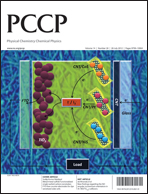Temperature dependence of phonon modes, dielectric functions, and interband electronic transitions in Cu2ZnSnS4 semiconductor films
Abstract
The quaternary semiconductor Cu2ZnSnS4 (CZTS) has attracted a lot of attention as a possible absorber material for solar cells due to its direct bandgap and high absorption coefficient. In this study, photovoltaic CZTS nanocrystalline film with a grain size of about 10 nm has been grown on a c-plane sapphire substrate by radio-frequency magnetron sputtering. With increasing the temperature from 86 to 323 K, the A1 phonon mode shows a red shift of about 9 cm−1 due to the combined effects of thermal expansion and the anharmonic coupling to the other phonons. Optical and electronic properties of the CZTS film have been investigated by


 Please wait while we load your content...
Please wait while we load your content...